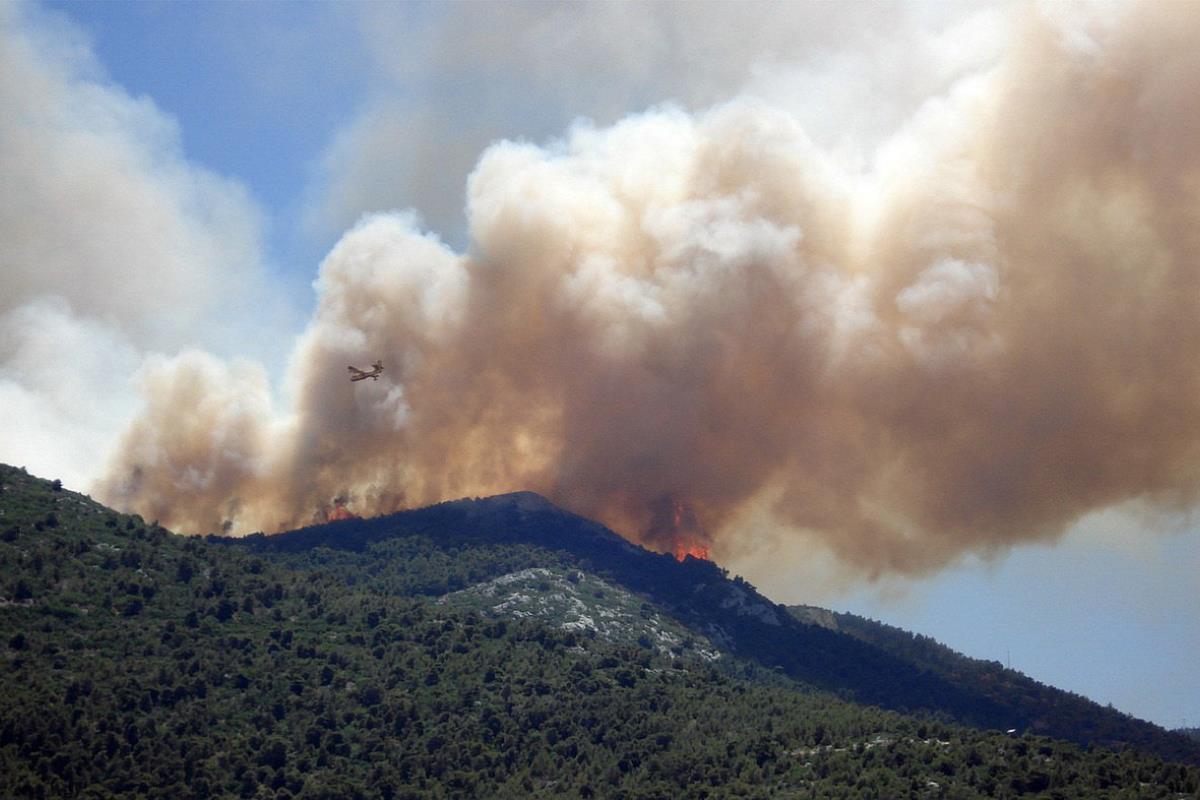
Amid a world grappling with unprecedented environmental upheaval, a haunting question arises: Could this year etch its name into history as the most calamitous wildfire year ever witnessed? The heart-wrenching images of raging infernos consuming forests, homes, and lives have etched themselves into our collective consciousness. In 2023, could we find ourselves looking back at a year defined by an unforgiving wildfire crisis?
The toll of wildfires, both in terms of environmental ruin and human anguish, has surged to unparalleled heights. From the idyllic isles of Hawaii to the sprawling landscapes of the US and Canada, the ancient terrains of Greece, and elsewhere in the world, flames have left destruction in their wake, leaving us pondering whether this year could be a tipping point for an unprecedented global wildfire emergency.
This year's wildfires have provoked unsettling questions about whether the spectre of climate change has catapulted us into an era of relentless wildfire intensity. The rising temperatures, prolonged droughts, and erratic weather patterns have created a combustible concoction, enabling fires to transcend mere incidents and evolve into uncontainable cataclysms.
Amidst headlines recounting the courage of firefighters battling impossible odds and communities shattered by loss, one haunting query persists: Are we indeed bearing witness to the most catastrophic wildfire year, or is this a chilling glimpse of the unsettling new norm we must grapple with?
The disheartening statistics unveil a sombre tableau. A sea of pristine wilderness reduced to charred remnants, ecosystems disrupted, habitats erased, and neighbourhoods obliterated. The toll on human lives and livelihoods is a jarring reminder of how our existence can be swiftly altered by nature's ferocity.
To grasp the entirety of this wildfire crisis, one must delve beyond the surface and fathom the intricate interplay of factors at play. While natural ignition sources like lightning have always sparked fires, human actions, spanning from neglect to urban sprawl, have amplified the threat. Moreover, the complex dance between fire suppression strategies and ecological cycles has culminated in dangerous accumulations of fuel, setting the stage for calamity.
Amidst the gloom, glimmers of hope pierce through. The urgency of the situation has galvanised renewed dedication to climate action and a re-evaluation of land management methodologies. Communities are uniting, pooling resources, and leveraging technology to predict, forestall, and combat wildfires with greater efficacy.
Thus, the pivotal question endures: Can we reverse the trajectory of this crisis? Could this tumultuous year herald a paradigm shift, catalysing global efforts to curb the harrowing menace of wildfires?
The destiny of this year and the ones to come rests upon our choices in the present. Our capacity to adapt, innovate, and unify on a global scale will decide whether we can quench these roaring fires and reinstate equilibrium in our delicate ecosystems.
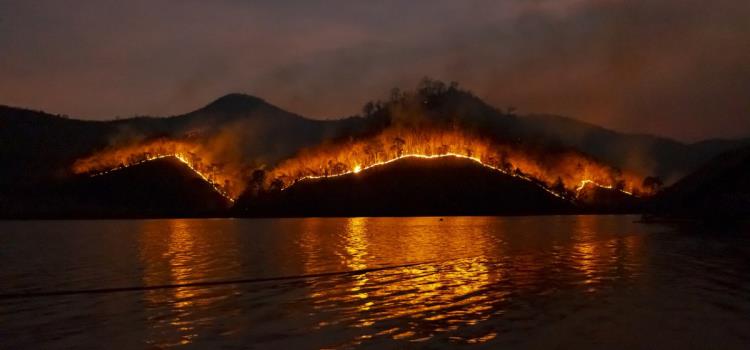
As we confront the stark reality of this year's wildfires, let us not solely lament the losses. Instead, let us channel our collective determination into altering this course. The stakes are astronomical, and the clock is ticking. The fate of this year teeters on the brink of becoming a turning point – a rallying cry for resolute action against the relentless onslaught of wildfires. Only time will unveil whether we are teetering on the precipice of a bleaker future or standing on the threshold of meaningful change.
Share this story:
TweetBeyond the Headlines
The Unruly Flames: Understanding wildfires and their causes
Wildfires are destructive infernos that wreak havoc on landscapes, ecosystems, and communities alike. These massive conflagrations are a complex interplay of environmental factors, natural processes, and human activities. As the world grapples with increasing instances of wildfires, understanding their nature and the causes behind them becomes paramount. Lets delve into their causes, and the intricate relationship between human actions and the untamed forces of nature.
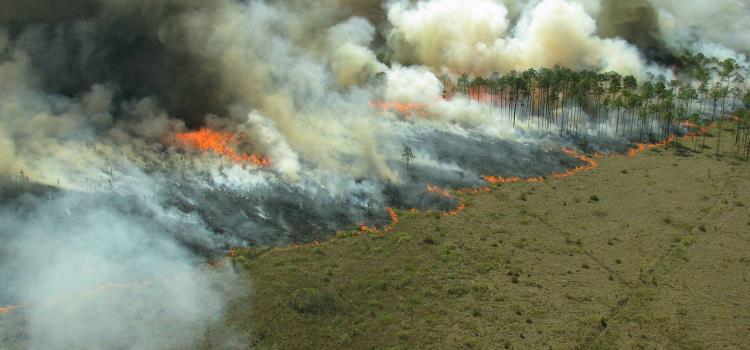
What are Wildfires?
A wildfire, commonly known as a forest fire or a bushfire and are also referred to as "Nature's Fury", is an uncontrolled fire that rapidly spreads across vegetated landscapes, consuming everything in its path. These fires vary in size and intensity, ranging from small, localised flames to massive infernos that can cover vast stretches of land, leaving devastation in their wake. Wildfires are typically fuelled by dry vegetation, which serves as potent tinder for the flames.
Natural Causes:
Natural causes of wildfires are often rooted in the delicate balance of ecosystems. Lightning strikes are a prominent example, igniting fires when the electric discharge interacts with dry vegetation. These natural wildfires play a crucial role in ecosystems by clearing out dead vegetation, allowing new growth to flourish and maintaining biodiversity.
Human Activities as Ignition Sources:
Human activities are a significant contributor to the ignition of wildfires. One of the most common ways in which human actions lead to fires is through discarded cigarette butts, unattended campfires, or sparks from machinery. Additionally, power lines and utility equipment can cause sparks that ignite fires, particularly in regions prone to dry conditions.
Human-Caused Fires: Accidental and Intentional:
Wildfires caused by human negligence or accidents can have severe consequences. A poorly extinguished campfire, a discarded cigarette, or a vehicle parked over dry grass can quickly escalate into a raging wildfire. Unfortunately, intentional human-caused fires also occur. Arson, the deliberate act of setting fires, can have devastating effects, putting lives, property, and natural habitats at risk.
The Role of Climate:
Climate plays a crucial role in the frequency and intensity of wildfires. Rising temperatures, prolonged droughts, and altered precipitation patterns create conditions conducive to the rapid spread of fires. Dry and hot conditions lead to the desiccation of vegetation, turning it into highly flammable material. This situation is exacerbated by climate change, which amplifies the occurrence of extreme weather events, making wildfires more challenging to manage.
Urban-Wildland Interface:
The interface between urban areas and wildland regions is a zone of heightened wildfire risk. As communities expand into wildland areas, the potential for fires to impact populated areas increases. Urban structures and the presence of human activities can provide ignition sources, and the proximity of homes and businesses to vegetation makes containment efforts more challenging.
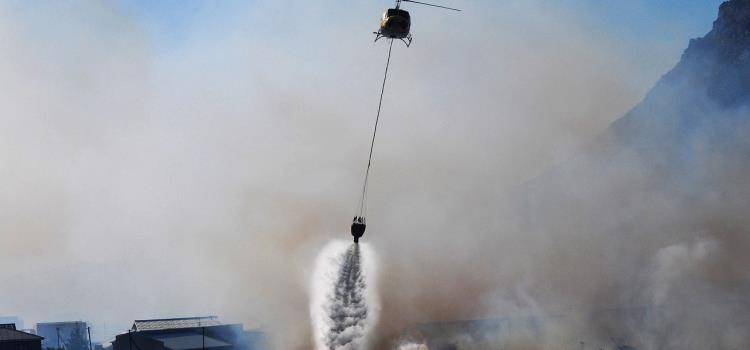
Invasive Species and Fuel Build-up:
The invasion of non-native plant species can also contribute to the intensity and frequency of wildfires. These invasive species often outcompete native vegetation, creating dense and highly flammable undergrowth. As a result, the accumulation of fuel for fires increases, making ecosystems more susceptible to rapid and widespread ignition.
Forestry Practices and Fire Suppression:
Paradoxically, certain historical forestry practices and fire suppression efforts have unintentionally contributed to the severity of wildfires. For decades, many forests were managed with the goal of preventing all fires, leading to an accumulation of dead vegetation. When fires were eventually allowed to burn, they encountered an abundance of fuel, intensifying their impact. Contemporary forest management strategies focus on controlled burns and prescribed fires to reduce fuel build-up and restore ecosystem health.
Strategies for Wildfire Management and Suppression
Wildfire management involves a multifaceted approach that encompasses prevention, preparedness, suppression, and recovery.
Below we look at various strategies employed to tackle wildfires and minimise their devastating impact;
Prevention and Education:
One of the most effective ways to combat wildfires is through prevention and education. Public awareness campaigns are launched to educate communities about responsible fire practices, such as proper campfire extinguishment and the dangers of discarding cigarette butts in dry areas. Land management agencies also implement regulations to restrict activities that could potentially ignite fires during periods of high fire danger.
Early Detection and Monitoring:
Early detection is paramount in curbing the spread of wildfires. Advanced technologies, such as satellites, drones, and infrared cameras, are employed to detect fires in their infancy, allowing for rapid response. Fire lookout towers and trained spotters play a crucial role in monitoring remote regions and alerting authorities to emerging fire threats.
Prescribed Burns and Fuel Reduction:
Prescribed burns, also known as controlled burns, are planned fires intentionally set under controlled conditions. These fires remove accumulated dry vegetation, reducing the potential fuel available for wildfires to ignite and spread. By proactively managing fuel build-up, land managers can mitigate the risk of uncontrolled wildfires while simultaneously restoring ecosystem health.
Firebreaks and Defensible Space:
Firebreaks are cleared areas devoid of flammable vegetation that act as barriers to slow or stop the progress of wildfires. Creating defensible space around structures involves clearing vegetation and creating a buffer zone to reduce the risk of fire spreading to buildings. These measures provide firefighters with safer conditions for containment efforts and protect communities from the advancing flames.
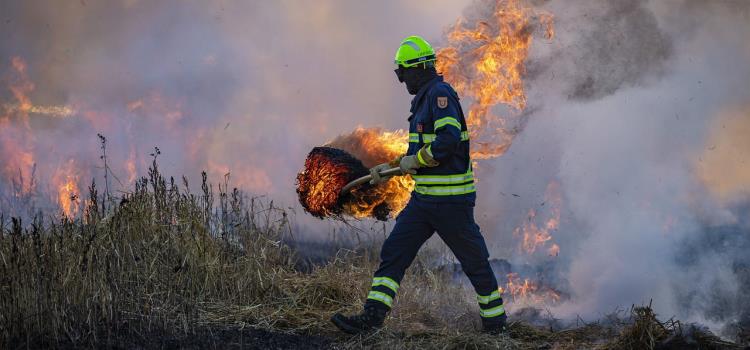
Fire Suppression Tactics:
When wildfires break out, firefighting efforts become a critical endeavour. Firefighters employ a range of tactics, from ground-based crews using hand tools and equipment to aerial operations involving helicopters and fixed-wing aircraft dropping water and fire retardants. These tactics aim to control the fire's progression, protect human lives and property, and prevent further escalation.
Community Preparedness:
In wildfire-prone regions, community preparedness is instrumental in minimising damage. Residents are encouraged to create defensible spaces around their properties, develop evacuation plans, and stay informed about local fire conditions. Collaborative efforts between communities and firefighting agencies enhance the effectiveness of suppression efforts and ensure the safety of both residents and responders.
Post-Fire Rehabilitation:
After a wildfire is contained, the process of rehabilitation begins. This involves restoring damaged ecosystems, stabilising soil to prevent erosion, and planting native vegetation to aid in the recovery of the landscape. Post-fire rehabilitation aims to mitigate the long-term ecological impacts of wildfires and restore natural habitats.
Research and Technology:
Advancements in technology play a pivotal role in wildfire management. Supercomputers simulate fire behaviour to aid in strategic planning, and advanced modelling helps predict fire spread under different conditions. Research efforts also focus on developing more efficient fire-resistant building materials and strategies to safeguard infrastructure in fire-prone areas.
Wildfires are a natural part of many ecosystems, playing a vital role in maintaining ecological balance. However, the increasing frequency and intensity of wildfires in recent years underscore the profound influence of human activities and climate change on this natural phenomenon.
Understanding the causes of wildfires is essential for implementing effective mitigation and prevention strategies. Balancing conservation efforts, responsible land management, and climate action will be key in reducing the destructive impact of wildfires on both the environment and human communities.
Wildfires are formidable adversaries, but with a comprehensive approach that encompasses prevention, early detection, suppression, and recovery, their impact can be minimised. Through collaborative efforts between communities, land management agencies, researchers, and firefighting personnel, the world can strive to strike a balance between respecting nature's cycles and safeguarding lives and ecosystems.










